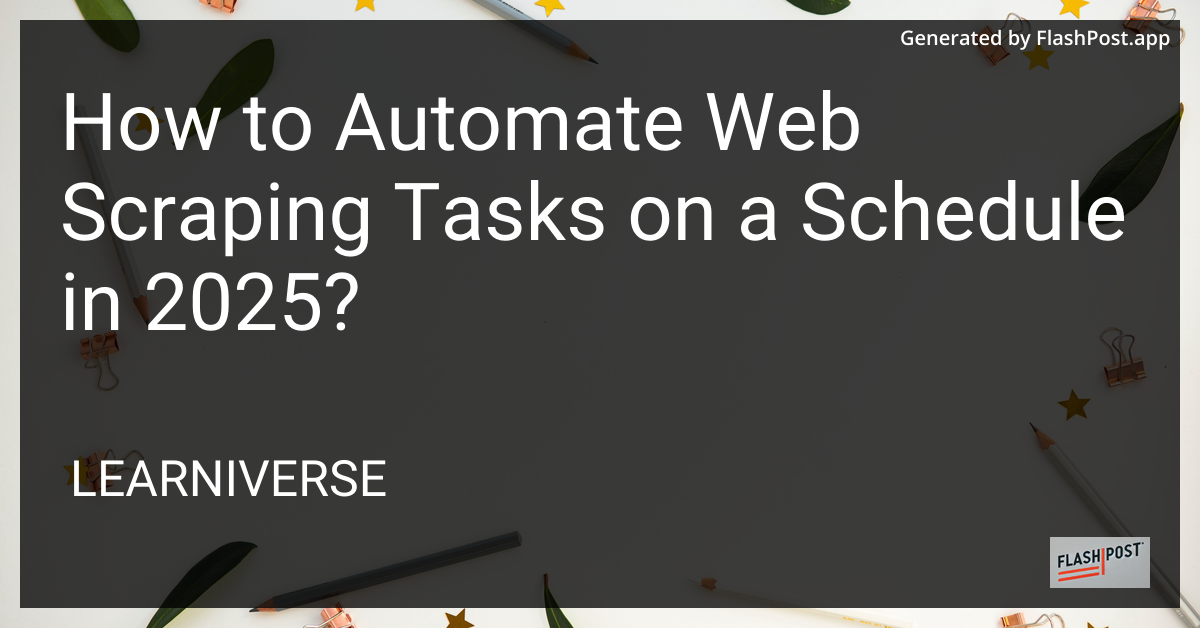How to Automate Web Scraping Tasks on a Schedule in 2025?

Web scraping has become an essential tool for data gathering and analysis. In 2025, the landscape of web scraping has evolved with more sophisticated tools and strategies. Automating your web scraping tasks can save time and ensure that you always have the most up-to-date information. This article will guide you through the processes of scheduling and automating web scraping tasks effectively.
The Importance of Automation in Web Scraping
Automating web scraping has several advantages:
- Efficiency: Automation reduces manual effort and increases data collection speed.
- Consistency: Ensures data is collected at regular intervals without any miss.
- Scalability: Handles increased volumes of data with ease.
Getting Started with Automation
Tools and Technologies
There are various tools available to automate web scraping tasks:
- Python Libraries: Libraries like BeautifulSoup and Scrapy are popular choices for building scrapers.
- Selenium: Useful for scraping dynamic content from JavaScript-heavy sites.
- Browser Automation Tools: Tools like Puppeteer and Playwright offer powerful automation capabilities.
Setting Up Scheduled Tasks
- Choose the Right Tools: Depending on your needs, select the appropriate libraries and automation tools.
- Use Task Schedulers: Integrate tools like
cronfor Unix-based systems or Task Scheduler for Windows to run scripts at designated times. - Database Integration: Store scraped data in a database for easy access and analysis.
Best Practices for Scheduled Scraping
- Use Proxies: Implement sneaker proxy services to avoid IP bans and ensure stable connections.
- Monitor Task Health: Continuously check for issues such as overloaded proxies.
- Respectful Scraping: Adhere to
robots.txtand site-specific rules to prevent being blocked. - Maintain Code: Regularly update your scripts to accommodate changes in website structures.
Advanced Considerations
- Handle Data Changes: Implement logic to accommodate changes in HTML structure and scripting.
- Distributed Scraping: Use cloud services or a distributed system for large-scale data collection tasks.
Choosing Proxies for Automation
When selecting proxies, consider factors such as speed, reliability, and anonymity. Review shared proxy selection criteria to make an informed decision and ensure your scraping tasks run smoothly.
Conclusion
Automating web scraping tasks on a schedule in 2025 involves a combination of selecting the right tools, setting up task schedulers, and following best practices. As web technologies evolve, staying informed and adaptable will ensure successful data collection efforts on a large scale.
By automating your web scraping tasks, you open doors to efficient, reliable, and scalable data collection methods that are essential for staying competitive in today's data-driven world.